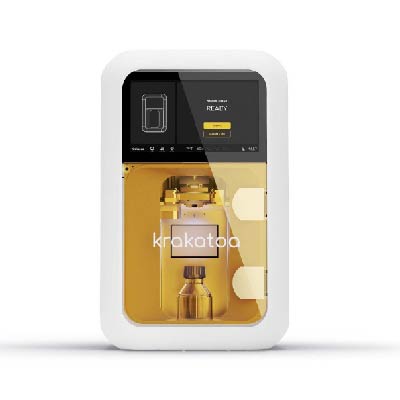March 24, 2022 -- LOS ANGELES -- The global biotechnology and pharmaceutical industry has a carbon footprint greater than even the forestry or paper industry, but there are ways scientists can help decrease their environmental impact, according to a keynote lecture at this week's United States and Canadian Academy of Pathology (USCAP) 2022 meeting.
In her talk at the USCAP Timely Topics session, Rachel Relph, PhD, of nonprofit organization My Green Lab, gave four tips to help scientists move toward a more environmentally friendly laboratory, including the following:
1. Turn equipment and lights off
Labs consume more than 40% of energy on a university campus but are only 20% of the space, said Relph, chief sustainability officer. Reduce that energy use by turning off the lights.
Ensuring the lights are turned off when leaving the room can have a big impact on a lab's overall energy consumption, but scientists can go one step further, Relph said.
"Do you need to have the lights on in the middle of the day or could you turn them off?" she asked. "Maybe add a task lamp, so that you have extra lighting at a desk or on the workstation."
Another source of major energy use? Plug load, which refers to all equipment plugged into the wall in the laboratory, such as refrigerators, water baths, incubators, and freezers. This type of energy use makes up about 22% of the energy that labs consume, Relph noted.
"So, this is also a really big piece of the pie," she said. "And here again, it's important that we think about turning this equipment off. When we look at what consumes the most energy in the lab, it's typically things that have a heating element or cooling element."
2. Shut your sash
Another important step toward achieving a more environmentally friendly lab is closing the sash.
"Closing those sashes on chemical fume hoods and biosafety cabinets is probably one of the most important things that you can do in your lab," Relph said.
Chemical fume hoods in the laboratory can consume 3.5 homes' worth of energy, Relph noted.
"They are massive, massive energy consumers," Relph said. "A lot of that energy consumption is actually related to having to replace the air that gets blown out through your fume hood."
For the forgetful scientists, there are all sorts of ways to be reminded to close the sash, from smiley face stickers that do not form unless the stash is closed to open-source technologies, like Massachusetts Institute of Technology's alarm that beeps when the fume hood stash remains open.
Just by getting a scientist to get in the habit of closing the sash can offer massive cost-savings.
"Harvard University pays for their entire green labs program through its 'Shut the Sash' campaign; it saves them about $400,000 every year," she said.
3. Reduce and reuse
We all know the three R's: Reduce, Reuse, and Recycle.
To have an impact, Relph maintains that scientists should focus their efforts on reducing single-use plastics and reusing glass and plastic items since "recycling rates have plateaued and very few materials are actually recycled, particularly from laboratories."
Instead, she suggests taking an inventory of what lab item gets thrown out the most -- is it the gloves or pipette tip, for instance.
"Ask yourself: Is there a way that we might be able to reuse that? What would that look like? How might we do that differently?" she said.
4. Make different choices
Relph urged the USCAP attendees to look deeper than the dollar cost of a product.
"Think about that total cost of ownership," she said. "Think about all of those other inputs ... because all of those other inputs have environmental impact."
When it comes to lab products, Relph encouraged scientists to think about the whole picture of the product, including the following:
- How much energy or water is it going to use?
- Are there a lot of secondary materials (e.g., pipette, tubes, solvents, etc.) needed to use the product?
- What happens to the product after it is used?
"If we are going to meet this global climate crisis, this is an industry that needs to take action and needs to take action in very meaningful ways," she said.
Carbon impact
My Green Lab, an organization dedicated to building a culture of sustainability in science, published a report in 2021 on the carbon impact of the biotech and pharmaceutical industry that found that the sector was the 25th largest emitter of global carbon emissions.
"Most of the carbon in this industry is in its supply chain," Relph said. "When you look at where that carbon is [from], 48% of it comes from purchased goods and services -- all those lab products that you're bringing in. Coming in second at 29% is the carbon impact of the goods sold: the drugs, the devices, that these companies are making."
Through My Green Lab, Relph partners with organizations to build tools and resources that support laboratory sustainability and that help to accelerate the adoption of best practices.
"We believe that every lab can be operated in a green way," she said. "And that the products that we are bringing into these labs that we are creating and carrying out of these labs can all be designed with the environment in mind."
Copyright © 2022 scienceboard.net








